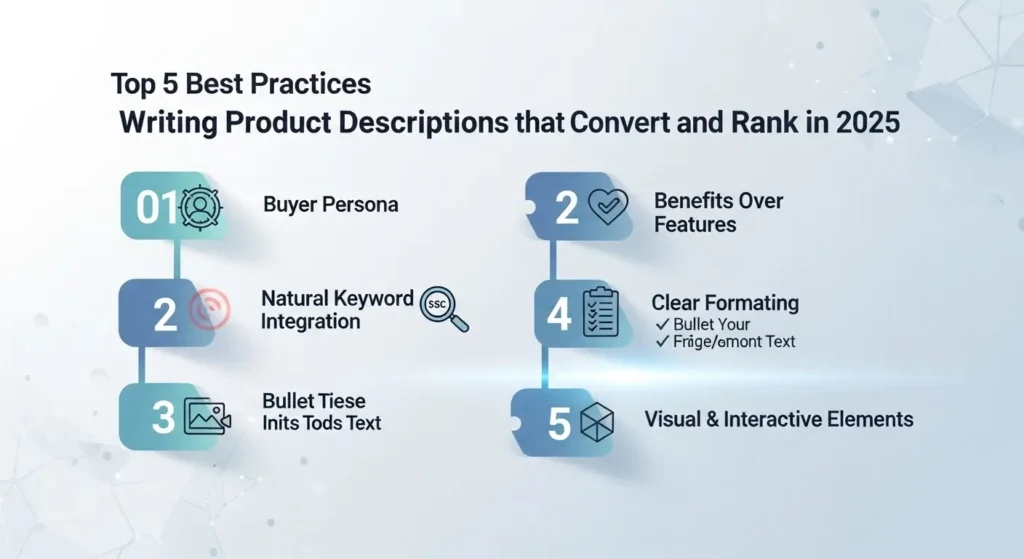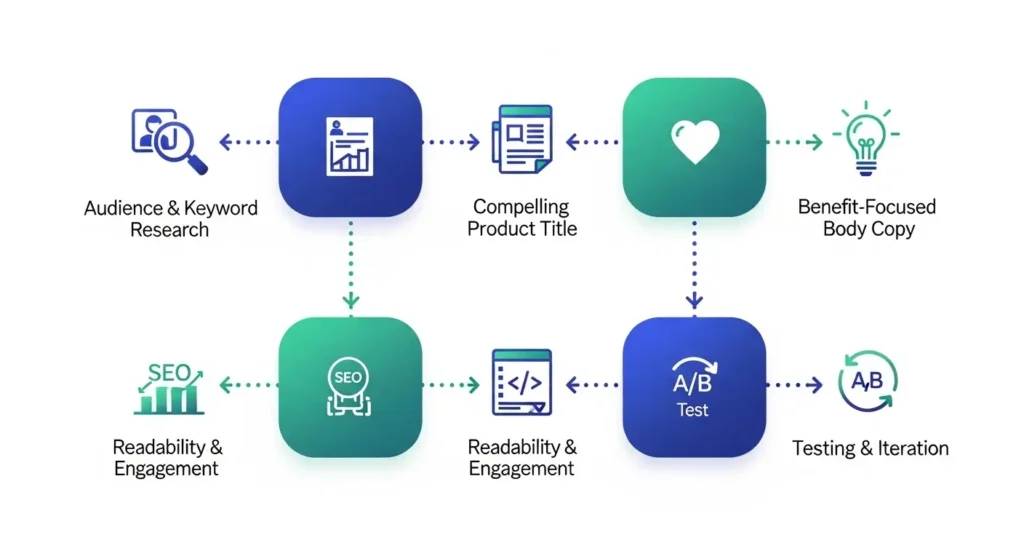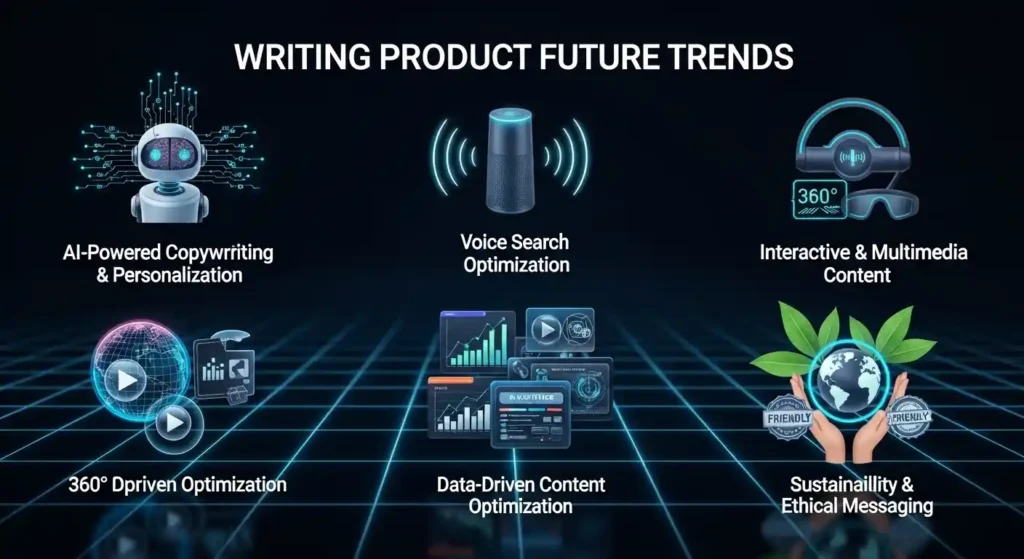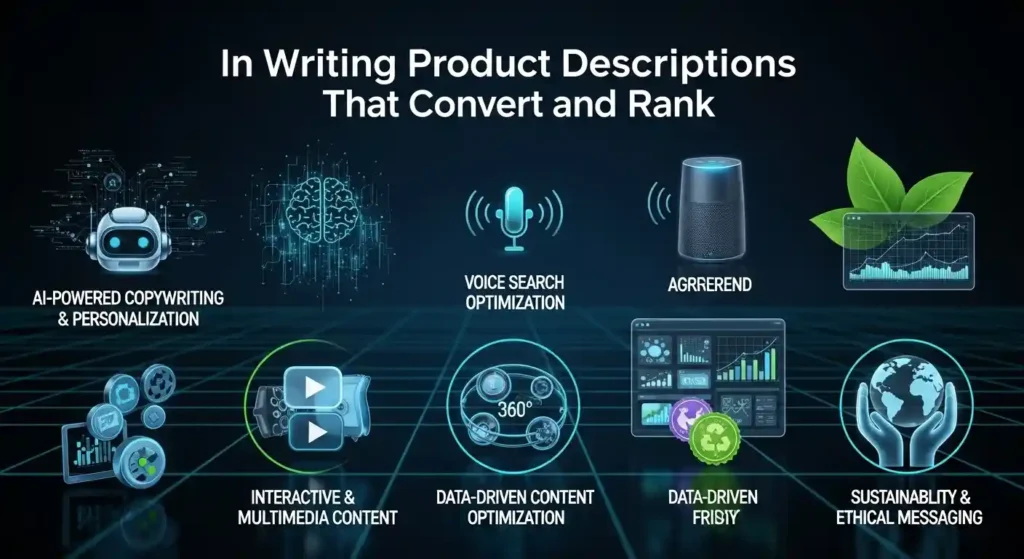Writing product descriptions that convert and rank is one of the most powerful strategies e-commerce store owners can use to boost sales and improve online visibility. In today’s saturated market, simply listing product features isn’t enough your descriptions must engage shoppers emotionally while also satisfying search engine algorithms.
If your product descriptions fail to capture attention or rank well on Google, you risk losing valuable traffic and potential customers to competitors. This guide will walk you through proven techniques and best practices to craft compelling product descriptions that drive conversions and enhance SEO.
You’ll learn why product descriptions matter, what works best in 2025, and how to overcome common challenges. By the end, you’ll have a clear, actionable roadmap to write descriptions that truly perform—helping your e-commerce store stand out and grow.
Table of Contents
Understanding the Importance of Writing Product Descriptions That Convert and Rank
When it comes to writing product descriptions that convert and rank, it’s essential to recognize their dual function. Your product descriptions are not only key to persuading potential customers but also crucial for search engines to understand your offerings.
Driving Conversions Through Persuasive Copy
Effective writing product descriptions that convert and rank means crafting copy that clearly highlights how your product solves a problem or meets a need. For instance, instead of just mentioning “water-resistant fabric,” a description that converts explains, “Stay dry and comfortable in any weather thanks to our water-resistant fabric.”
By focusing on benefits rather than just features, your descriptions can significantly improve conversion rates.
Boosting Search Engine Visibility
From an SEO perspective, writing product descriptions that convert and rank means using relevant keywords naturally within your content. This approach helps search engines better index your pages, improving your rankings for targeted search terms.
Studies show that most e-commerce traffic comes from organic search, making well-optimized descriptions indispensable for driving traffic and sales.
Improving Customer Trust and Experience
Clear, informative descriptions build trust by setting accurate expectations. This reduces returns and encourages customer loyalty an outcome that comes from writing product descriptions that convert and rank effectively
Current Best Practices for Writing Product Descriptions That Convert and Rank in 2025

Mastering writing product descriptions that convert and rank requires staying up to date with evolving e-commerce and SEO trends. Here are the best practices you need to adopt in 2025 to ensure your product descriptions perform at their highest level.
1. Know Your Buyer Persona Inside and Out
Effective writing product descriptions that convert and rank starts with understanding your target audience. Tailor your tone, language, and messaging to the specific needs, challenges, and preferences of your buyer personas. This connection increases engagement and builds trust.
For example, if you sell tech gadgets, your descriptions should include technical benefits for enthusiasts while remaining accessible to beginners.
2. Focus on Benefits Over Features
A common mistake in product descriptions is simply listing features. Instead, to excel at writing product descriptions that convert and rank, emphasize how those features translate into real-world benefits.
For instance, instead of “This phone has a 4000mAh battery,” write “Enjoy all-day usage without worrying about recharging thanks to a powerful 4000mAh battery.”
3. Integrate Keywords Naturally
SEO is crucial. Incorporate your primary keyword writing product descriptions that convert and rank along with relevant secondary and LSI keywords in a way that flows naturally. Avoid keyword stuffing, which harms readability and rankings.
Secondary keywords might include phrases like “e-commerce product descriptions,” “SEO product copy,” or “boost product sales with descriptions.”
4. Use Clear Formatting for Easy Scanning
Shoppers often skim descriptions. Use bullet points, short paragraphs, and descriptive subheadings to make content scannable. This improves both user experience and SEO.
5. Add Visual and Interactive Elements
Complement your text with high-quality images, videos, and 360-degree product views. Visuals increase engagement and can dramatically improve conversions—an essential part of writing product descriptions that convert and rank in today’s market.
Now that you know the current best practices for writing product descriptions that convert and rank, let’s move into a step-by-step guide to help you implement these strategies effectively.
Step-by-Step Implementation Guide to Writing Product Descriptions That Convert and Rank

Ready to put theory into practice? Follow this detailed guide to craft product descriptions that not only convert visitors into customers but also help your pages rank higher on search engines.
Step 1: Research Your Audience and Keywords
- Understand Your Buyer Personas: Use tools like Google Analytics, customer surveys, and social media insights to learn who your customers are, what they want, and the language they use.
- Perform Keyword Research: Use SEO tools such as Ahrefs, SEMrush, or Google Keyword Planner to find your primary keyword writing product descriptions that convert and rank plus relevant secondary keywords and long-tail phrases.
Step 2: Craft a Compelling Product Title and Headline
- Include your main keywords naturally.
- Make it benefit-driven and clear.
Example Template:
[Product Name] – [Key Benefit or Unique Feature]
Step 3: Write the Body Copy with a Focus on Benefits
- Start with a hook that connects to your customer’s needs.
- Highlight how your product solves their problems or improves their life.
- Use sensory and emotional language.
- Keep sentences concise and paragraphs short for readability.
- Incorporate your focus keyword and related terms seamlessly.
Step 4: Optimize for SEO
- Add keywords naturally in your description, meta titles, and meta descriptions.
- Use descriptive alt text for images.
- Implement schema markup (Product schema) to help search engines better understand your page.
Example JSON-LD Schema Snippet:
jsonCopier{
"@context": "https://schema.org/",
"@type": "Product",
"name": "Eco-Friendly Yoga Mat",
"image": "https://example.com/images/yoga-mat.jpg",
"description": "Durable, non-slip eco-friendly yoga mat perfect for all skill levels.",
"sku": "YM123",
"brand": {
"@type": "Brand",
"name": "GreenFit"
},
"offers": {
"@type": "Offer",
"url": "https://example.com/eco-friendly-yoga-mat",
"priceCurrency": "USD",
"price": "49.99",
"availability": "https://schema.org/InStock"
}
}
Step 5: Format for Readability and Engagement
- Use bullet points for features and benefits.
- Bold key phrases to draw attention.
- Add customer reviews or testimonials near the description.
- Include high-quality images or product demonstration videos.
Step 6: Test and Iterate
- Use A/B testing tools like Google Optimize or Optimizely to compare different versions.
- Monitor metrics such as conversion rate, bounce rate, and average time on page.
- Update descriptions based on performance data.
Common Challenges and Solutions in Writing Product Descriptions That Convert and Rank
Even with a solid plan, e-commerce store owners often face hurdles when writing product descriptions that convert and rank effectively. Here’s how to tackle the most common issues:
Challenge 1: Duplicate Content Across Products
Many store owners reuse manufacturer descriptions or repeat similar content across multiple products. This can lead to:
- SEO penalties from search engines for duplicate content.
- Lower rankings and reduced organic traffic.
Solution:
Create unique, original descriptions for each product. Use your brand voice and tailor descriptions to your audience. Even if products are similar, highlight distinct benefits or use cases.
Challenge 2: Keyword Stuffing and Over-Optimization
Trying to cram your focus keyword excessively makes descriptions awkward to read and can hurt SEO.
Solution:
Aim for natural keyword integration. Focus on user experience first, then optimize. Use synonyms and related terms to diversify your language while keeping SEO relevance.
Challenge 3: Writing Without Clear Benefits
Listing features alone won’t convince customers.
Solution:
Shift focus to customer benefits and emotional triggers. Explain how features solve problems or improve life. Use storytelling techniques to engage readers.
Challenge 4: Overwhelming or Confusing Layouts
Long blocks of text and poor formatting deter readers.
Solution:
Keep descriptions concise and scannable. Use bullet points, short paragraphs, and bolding for important info. Add visuals to break up text and support your message.
Challenge 5: Lack of Testing and Iteration
Many store owners set descriptions once and never revisit performance.
Solution:
Regularly test different versions of descriptions through A/B testing. Use analytics to understand what converts best and update accordingly.
Measurable Benefits and Expected Outcomes of Writing Product Descriptions That Convert and Rank

Implementing best practices for writing product descriptions that convert and rank can lead to tangible, positive results for your e-commerce store. Here’s what you can expect:
Increased Conversion Rates
- Clear, benefit-driven descriptions reduce hesitation and build buyer confidence.
- According to a study by Nielsen Norman Group, users are 40% more likely to purchase when product information is easy to understand.
- Brands that invest in quality product copy often see conversion rate increases of 20-35%.
Improved SEO Rankings and Organic Traffic
- Optimized descriptions help search engines better understand your products.
- Sites that follow SEO best practices for product pages enjoy higher search rankings, driving up to 60% more organic traffic, per BrightEdge research.
- Rich snippets from schema markup improve click-through rates by making your listings stand out.
Reduced Return Rates and Increased Customer Satisfaction
- Detailed, honest descriptions set accurate expectations.
- This clarity reduces product returns due to misunderstandings.
- Happy customers lead to better reviews and repeat purchases, further boosting your store’s reputation.
Enhanced Brand Authority and Trust
- Well-crafted, professional descriptions position your brand as knowledgeable and reliable.
- Consistency across product pages reinforces your brand identity and builds long-term customer loyalty.
Real-World Case Study: OutdoorGearCo
OutdoorGearCo revamped its product descriptions using these strategies—emphasizing benefits, optimizing for SEO, and adding schema markup. Results within three months included:
- 35% increase in sales conversions
- 25% boost in organic search traffic
- 15% reduction in product returns
With such significant benefits on the table, investing time and effort in writing product descriptions that convert and rank clearly pays off. Let’s now explore future trends shaping product descriptions and e-commerce content.
Future Trends in Writing Product Descriptions That Convert and Rank
The world of e-commerce and SEO is always evolving. Staying ahead means adapting your product descriptions to new technologies and consumer behaviors. Here are key future trends shaping writing product descriptions that convert and rank:
1. AI-Powered Copywriting and Personalization
- AI tools like ChatGPT, Jasper.ai, and others are becoming integral in generating scalable, personalized product descriptions.
- While AI speeds up content creation, human editing remains crucial to ensure authenticity and brand voice.
- Expect AI to help craft dynamic descriptions tailored to individual shopper profiles and browsing history.

2. Voice Search Optimization
- With the rise of voice assistants like Alexa and Google Assistant, optimizing for conversational, question-based queries is essential.
- Product descriptions will need to include natural language phrases and FAQs to capture voice search traffic.
3. Interactive and Multimedia Content Integration
- Augmented reality (AR) and 360-degree product views are becoming standard to enhance user experience.
- Future product pages will blend text descriptions with videos, interactive demos, and immersive visuals, boosting engagement and conversions.
4. Data-Driven Content Optimization
- Advanced analytics and heatmaps will allow marketers to understand exactly which parts of descriptions drive sales.
- Expect more continuous testing and AI-driven optimization to fine-tune copy based on user behavior and feedback.
5. Sustainability and Ethical Messaging
- Consumers increasingly seek brands that reflect their values.
- Product descriptions highlighting eco-friendliness, ethical sourcing, and social impact will resonate strongly and improve conversions.
Transition to Conclusion
By embracing these future trends, you can ensure your product descriptions remain effective and competitive in the rapidly changing e-commerce landscape.
Conclusion
Writing product descriptions that convert and rank is a vital skill for any e-commerce store owner aiming to increase sales and improve organic visibility. By understanding your audience, focusing on benefits, integrating SEO best practices, and continuously testing and refining your copy, you can transform product pages into powerful conversion engines.
Remember, effective descriptions do more than inform—they engage, persuade, and build trust. Investing time and effort in this area delivers measurable benefits, including higher conversion rates, better search rankings, reduced returns, and stronger brand loyalty.
As the e-commerce landscape evolves, staying updated with future trends like AI-assisted copywriting, voice search optimization, and multimedia integration will keep your store ahead of the curve.
Start applying these proven strategies today, and watch your product pages convert visitors into loyal customers while climbing search engine rankings.
Ready to boost your e-commerce success? Begin rewriting your product descriptions with these techniques now!
Actionable Checklist: Writing Product Descriptions That Convert and Rank
- Define your target buyer personas to tailor your descriptions.
- Conduct thorough keyword research, focusing on your primary keyword and related terms.
- Craft compelling, benefit-driven product titles and headlines.
- Write clear, persuasive body copy emphasizing benefits over features.
- Incorporate your focus keyword naturally throughout the description.
- Use bullet points, short paragraphs, and bolding for easy scanning.
- Add high-quality images, videos, or interactive media to support your copy.
- Implement structured data (schema markup) to enhance search engine understanding.
- Include social proof like customer reviews and ratings near descriptions.
- Regularly test and iterate your descriptions using A/B testing and analytics.
- Stay updated with emerging trends like AI tools and voice search optimization.
1 thought on “Writing Product Descriptions That Convert and Rank: The Ultimate Guide for E-Commerce Store Owners”